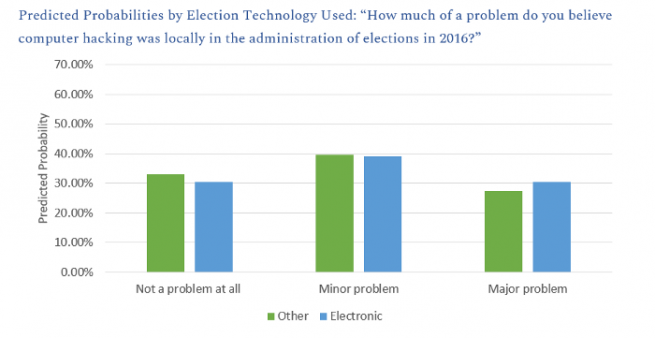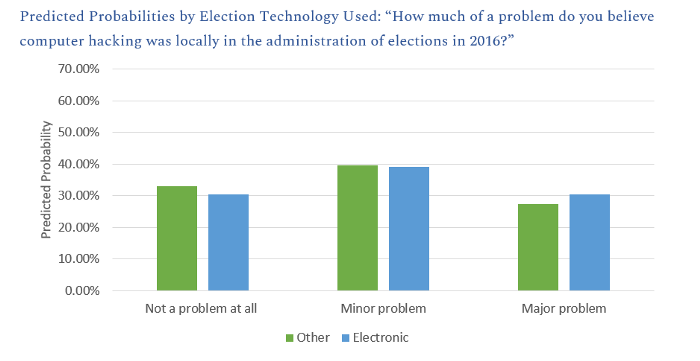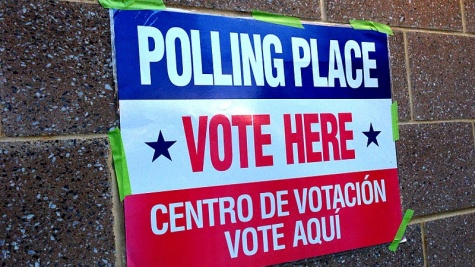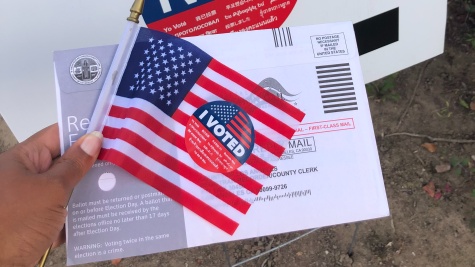American Trust in Voting Technology
The MIT Election Data and Science Lab helps highlight new research and interesting ideas in election science, and is a proud co-sponsor of the Election Sciences, Reform, & Administration Conference (ESRA).
Holly Ann Garnett and Pam Simpson recently presented a paper at the 2019 ESRA conference entitled, “American Trust in Voting Technology.” Here, they summarize their analysis from that paper.
How does the use of electoral technology at the voting booth impact voters’ trust in the electoral process?
While technology is used throughout the electoral cycle, for everything from voter registration to announcing the results, the voter most intimately experience the use of technology in elections through their experience at the ballot box, with the use of direct recording electronic voting mechanisms, optical scanning machines or other forms of e-voting technology.
Our working paper seeks to provide evidence on the impact of these technologies on voter trust, by considering the use of technology in in-person voting in the United States. The American experience is particularly useful to study since the technology used at the polls varies widely between American counties, due to a de-centralized system of election administration.
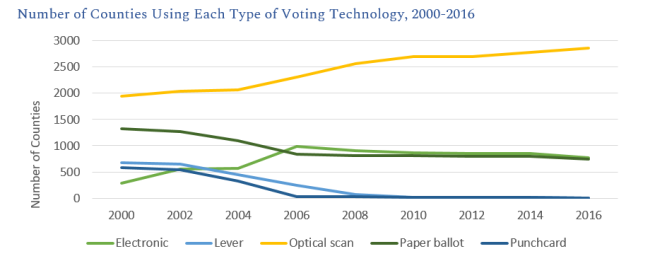
Note: Only selected technologies depicted. Data from Election Data Services for their Election Official and Voter Equipment Reporting database. Note that there was conflicting information for some counties. These counties were therefore not included in the analysis. Work is ongoing to resolve these discrepancies.

Note: Only selected technologies depicted. Data from Election Data Services for their Election Official and Voter Equipment Reporting database. Note that there was conflicting information for some counties. These counties were therefore not included in the analysis. Work is ongoing to resolve these discrepancies.
Taking advantage of the differences in electoral technology used between and within state, this paper considers the impact of voting technology on citizen trust in American elections.
Proposed Relationship
We measure trust using three survey questions following the 2014 and 2016 American elections (data from the Survey on the Performance of American Elections). These questions are:
- How confident are you that your vote in the General Election was counted as you intended?
- How often do you think the following occurs: Officials changing the reported vote count in a way that is not a true reflection of the ballots that were actually counted?
- How much of a problem do you believe computer hacking was locally in the administration of elections in 2016?
The results broadly demonstrate that, in the 2014 and 2016 American elections, voters who used electronic voting machines tended to have lower trust in the confidence of their vote, lower trust that electoral officials would not change the results, and lower trust that electoral systems would not be hacked. However, at the same time, these voters had hardly any distinguishable differences in trust in the vote or hacking of election administration nation-wide, suggesting that the use of electronic voting machines at the polls may, in fact, play a role in their lower trust in the electoral process.
Take the threat of hacking, for example. Those who used electronic voting technology were more concerned about hacking at the local (but not the national) level.
The implications of this finding are important for those seeking to improve public confidence in elections, including policymakers and election administrators. The experience of voting on a machine appears to be linked to voters having less trust in their vote, electoral officials and the security of electoral infrastructure. Thus, the push for a move from technology to ‘paper ballots’ in order to improve voter trust may find support in the results of this paper. However, research is ongoing to further explore this question and provide additional robustness checks for these results.
Authors’ Note: Please note that this paper is a work-in-progress, and while we are excited to share our preliminary analysis, we encourage those interested in this research to check back over the coming months for further refined analysis.


